Skipper Butterfly
1/800sec f/4.5 35mm ISO160 (Vivitar +10 Close-up filter + Vivitar Macro filter)
Nikon D90
Nikkor 35mm f/1.8G AF-S
Vivitar +10 Close-up Filter
Vivitar Macro Filter
Skippers differ from the true butterflies in their proportionately larger bodies, smaller wings, and hooked antennae, among many other structural differences, and can be confused with the moths. These smallish butterflies earns their common Skippers name for their jerky, skipping flight as they wing their erratic way from flower to flower.
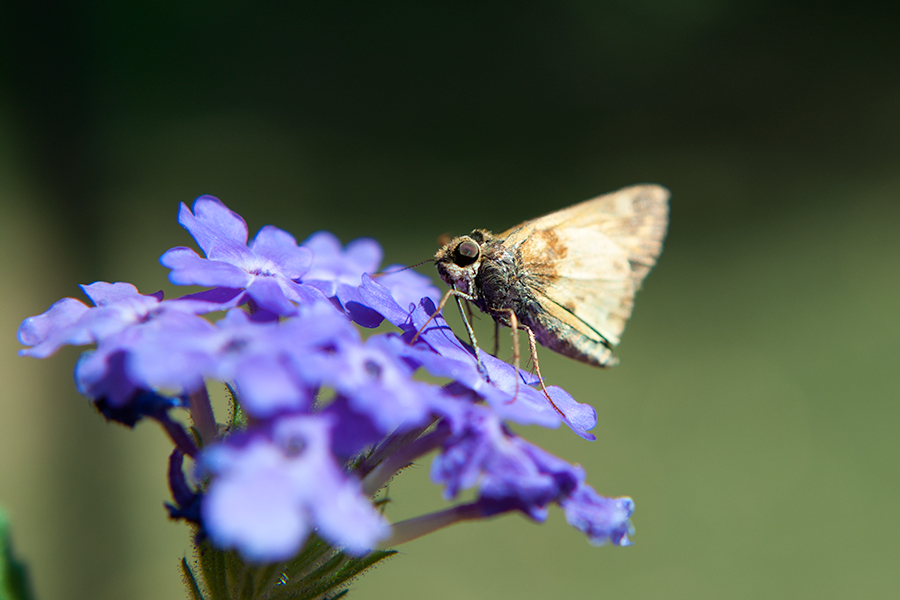
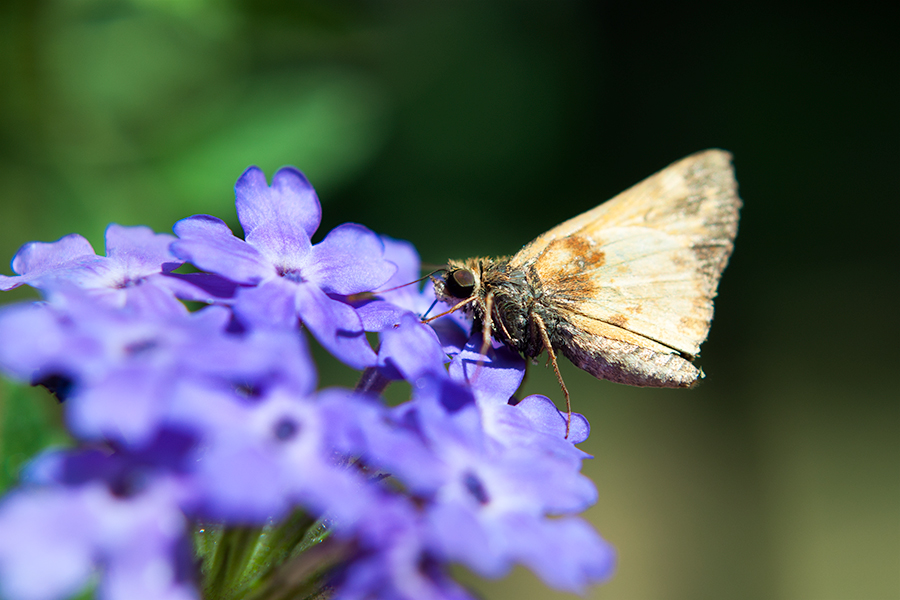

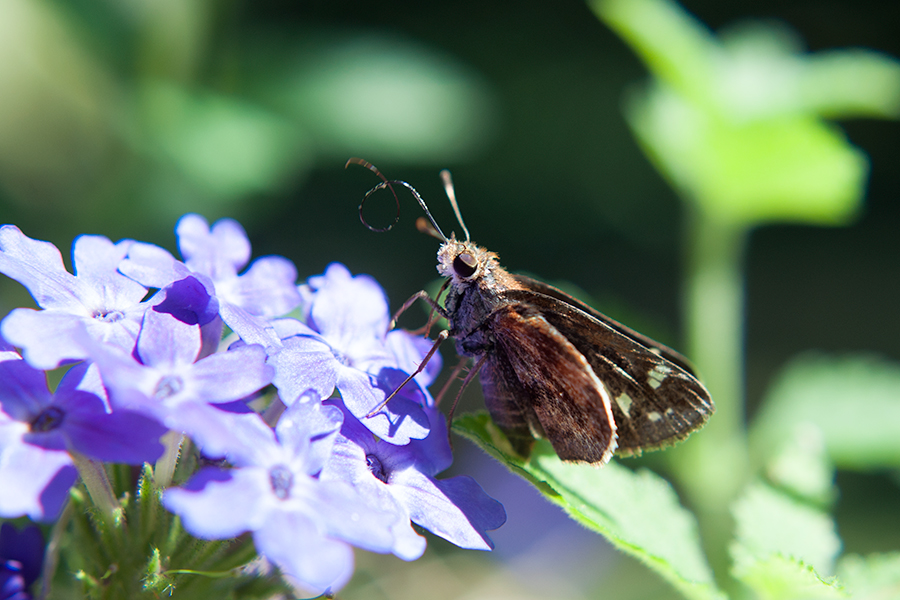
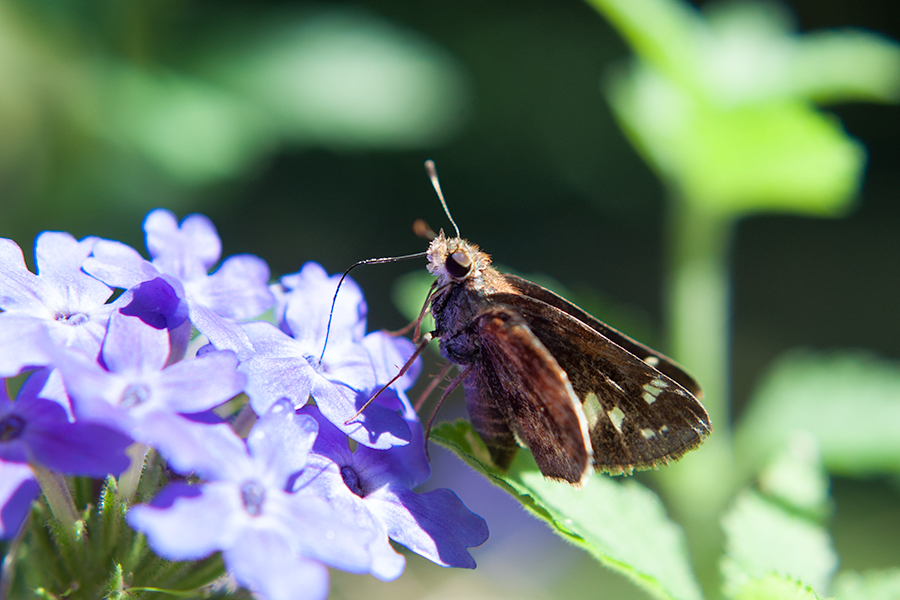
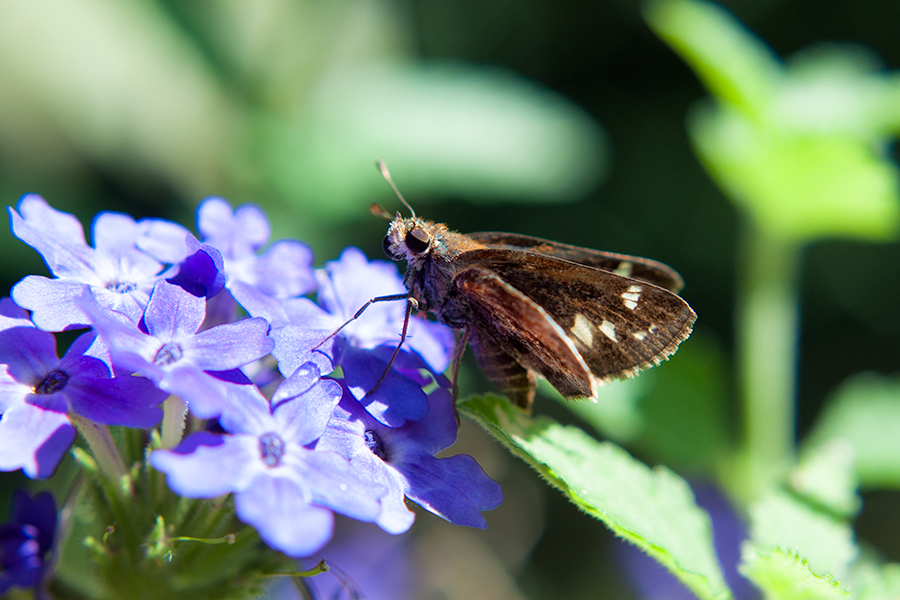
Nikkor 35 mm + Vivitar 10 Close-up filter
These tiny butterflies of the family Hesperiidae, do not affect human in any negative neither positive way. They are common in urban areas, and people often like to look at them.
Before I began photograph insects with the macro filters, I was completely unaware of these charming little butterflies. The beauty of macro-photography is that it lets you appreciate the uniqueness of every creature, even that small. Capturing Skippers is a challenge - they rarely stay in one spot for more than a moment, and never presents itself in full. The sure way to make good shot is to hold the flower, which the little thing is sitting on, and slowly turn it to desirable angle. The Skipper will disagree with you and will try to avoid your point of view, but no one ever said that being a photographer would be easy ;)
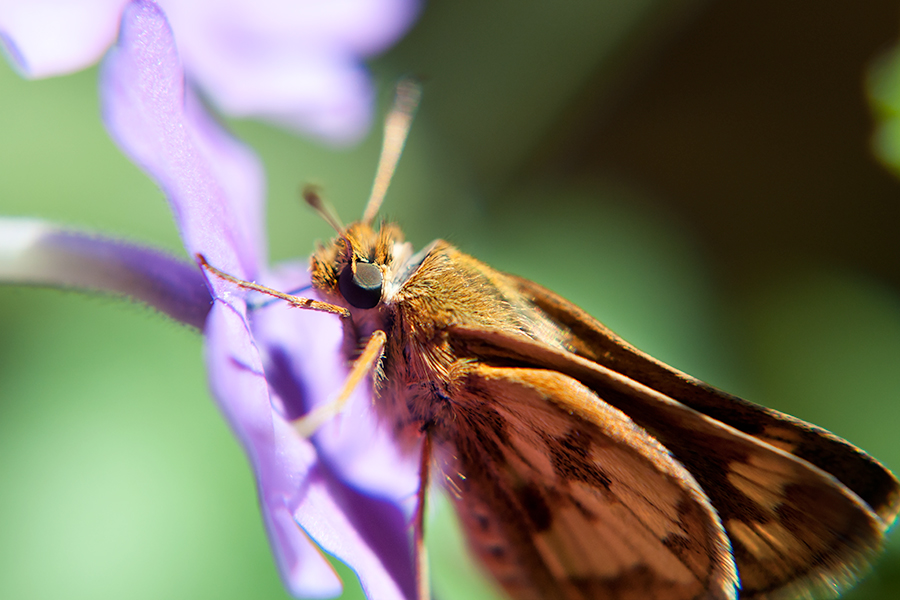
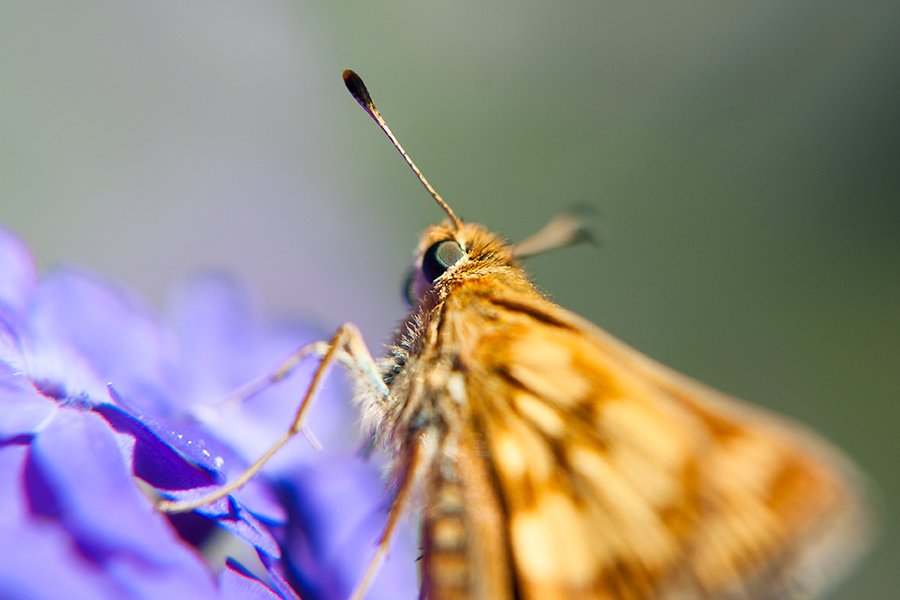
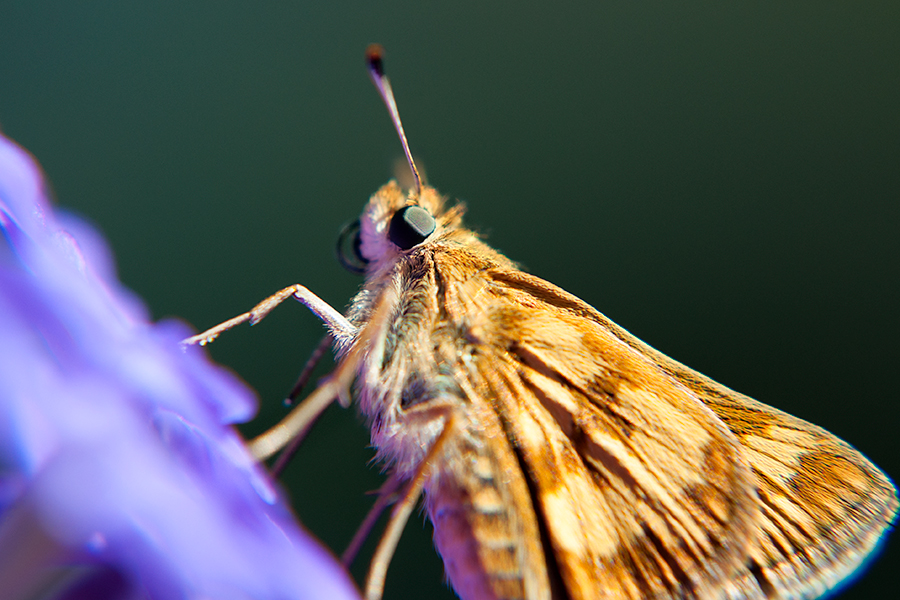
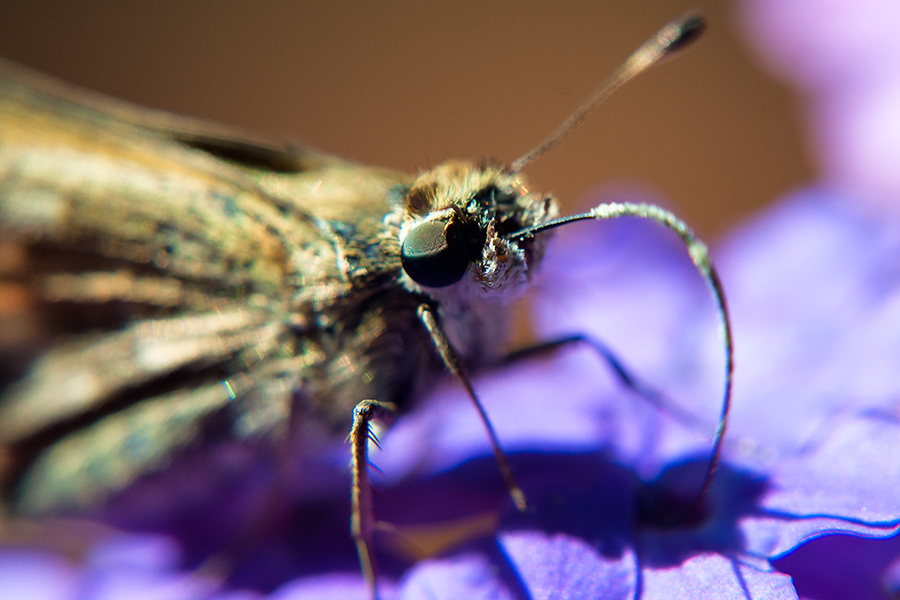

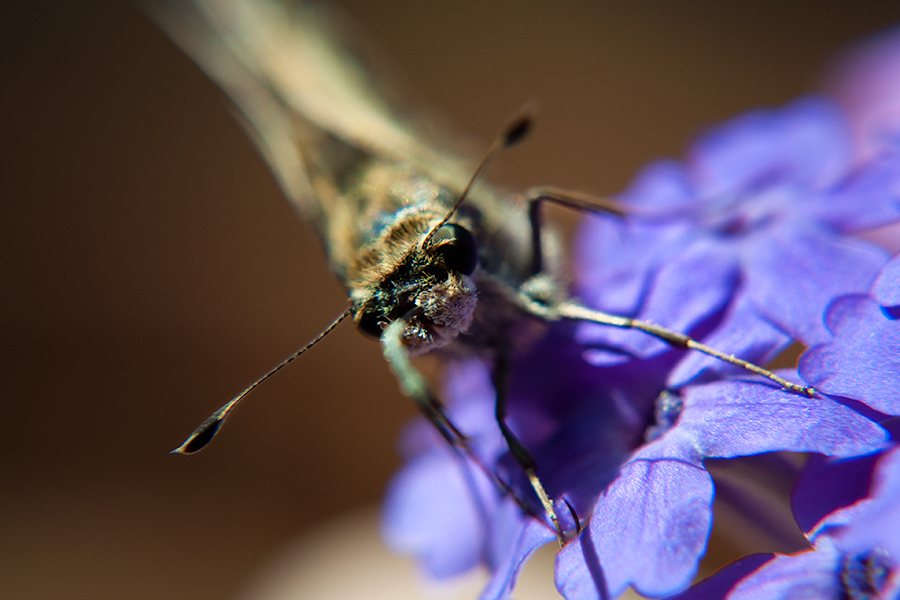
Nikkor 35 mm + Vivitar Macro filter + Vivitar 10 Close-up filter
- Skipper butterflies fly so fast they could outpace a horse, but most butterflies fly at 5 to 12 miles per hour (8 to 20 kilometers per hour).
- One more way to distinguish Skippers from true butterfly is in their resting position: Most hold their forewings upright and their hind wings horizontal. Butterflies, on the other hand, hold all four wings upright and together when resting and all four horizontal when basking.



